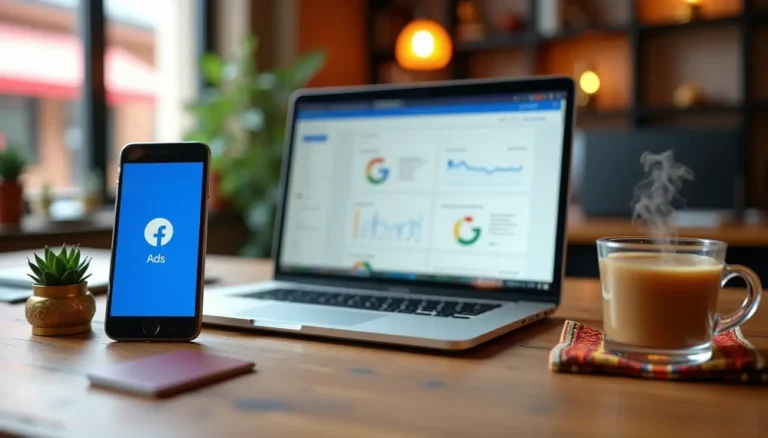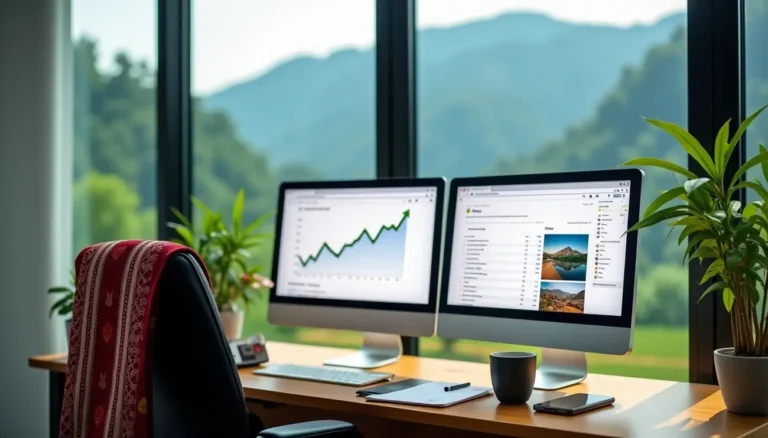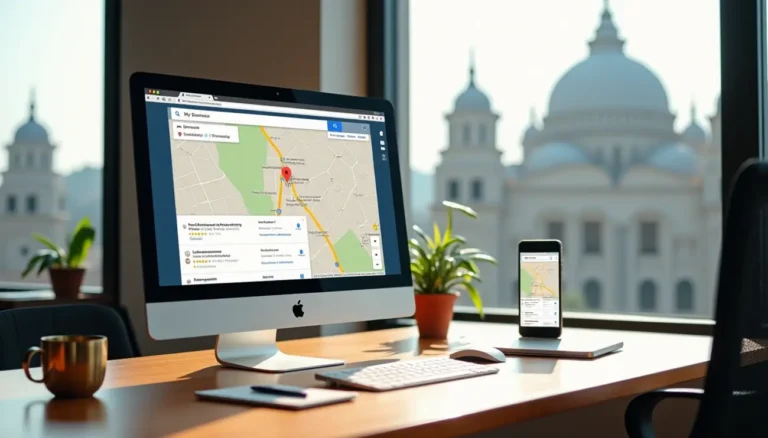Check Page Contents
ToggleBest SEO Success Tips and Tricks for Website Success

Best SEO Tips and Tricks for Website – Search engine optimization (SEO) is critical for driving traffic to your website organically. By optimizing your content and site for search engines like Google, you can propel your pages to the top of rankings where visibility and traffic are immense.
Implementing key SEO optimizations is essential if you want to maximize your website’s potential. This article will explore the top tips and tricks for succeeding with SEO and sending your site soaring up the search results. From competitor research to crafting compelling content, let’s unlock the power of search engine optimization.
Top 10 SEO Tips and Tricks
Getting to Know Your Competition
Understanding the keywords your competitors are targeting is critical for developing an effective SEO strategy. By studying your rivals, you can identify new keyword opportunities and ensure you are not missing out on valuable search terms.
There are a few key approaches to uncovering your competitors’ keyword targets:
- Use keyword research tools like Ahrefs, SEMrush, or Moz’s Keyword Explorer to analyze the top keywords driving traffic to their site. Look for patterns in the terms they rank for.
- Specifically, look at the keywords sending organic traffic to competitor website pages that align closely to yours. Identify both primary and long-tail keyword opportunities.
- Leverage tools like SEMrush’s Organic Research report to surface volumes, historical positions, and exact match keywords ranked for.
- Uncover new local keyword opportunities by using geographic modifiers and drilling down by country and city.
- Study their metadata and content. Manually review your top competitors’ titles, meta descriptions, headers, and page content. Make note of frequently used terms and themes.
- Analyze pages that rank well and carry high traffic to identify what is working.
- Load pages into SEO tools like Surfer SEO to extract all ranking keywords found within the content, title tags, alt text, etc.
- Check their backlink profile. See what types of sites are linking to them with what anchor text. This can provide insight into additional terms they are optimizing for.
- Use Ahrefs or Majestic to evaluate the anchor text of links pointing to their site. Identify phrases commonly used.
- Sort linking domains by authority and trust levels. Higher is better so it passes more equity.
- Monitor their activity over time. Set up tracking to keep an eye on new content they produce and monitor changes in their organic rankings.
Getting inside your competitor’s heads and understanding their SEO approach is invaluable market intelligence. With their keywords in your crosshairs, you can then expand upon their targets or seek out completely new opportunities they may be ignoring.

Crafting a Captivating Title and Metadata
Your title tag and meta description provide the critical first impression in search results. An optimized title and meta should pique interest and entice searchers to click through to your content.
Follow these tips for title tag and meta description optimization:
- Incorporate your target keyword naturally at the beginning of the title tag.
- Keep the keyword target early – ideally within the first 3-5 words.
- Avoid awkward phrasing or stuffing just to push keywords up further. It needs to sound natural.
- Craft an interesting title that speaks to search intent – what the user is querying and looking to learn.
- Put yourself in the searcher’s shoes. What type of result would grab your attention?
- Use emotional triggers like “best”, “surprising”, “no-fail” etc.
- Limit the title tag to about 60 characters to prevent cutting off in search listings.
- Check title tag length rendering within SERP preview tools.
- If cut-off does occur with longer titles, put the most important info upfront.
- Similarly, constrain meta descriptions to 155-160 characters maximum.
- Google may automatically truncate descriptions exceeding the limit.
- Managing character count allows you to control what shows rather than leaving it to chance.
- Use compelling meta description copy focused on user benefits and what the content offers.
- Outline the specifics the reader will learn or get from the content.
- Paint a picture of how their life improves as a result of reading it.
Getting title tags and metadata right is key for both user experience and search engine optimization. Master these vital elements, and you’ll be off to a great start.

Writing for Humans and Search Engines
The content you create must strike a balance between appealing to users and search engines. Technical jargon and stuffing copy with keywords fail to engage readers. Meanwhile, captivating content light on key terms gets little SEO value.
The solution is optimizing content that offers the best of both worlds:
- Conduct keyword research to build content around high-value search terms. But use keywords naturally in the copy.
- Identify 1-2 primary targets and 2-3 secondary long-tail keywords.
- Take a top-down approach of theming around the primary and then optimizing specifics.
- Structure content so it is easy for users to scan and digest information. Use headers, lists, images, and emphasis formatting.
- Break up 300+ word paragraphs into easier-to-digest chunks.
- Make use of bullet points and numbered lists for key takeaways and steps.
- Expand on keywords to provide true value for searchers. Aim for comprehensive, in-depth content.
- Strive for long-form style content exceeding 2,000 words when possible.
- Cover multiple questions and permutations of the topic.
- Include varied perspectives, case studies, and thorough explanations.
- Link out to authority sites and cite sources to establish subject matter expertise.
- Reference reputable publications and quality research linking to them.
- Quote opinions and findings from proven industry experts.
Writing solely to stuff in keywords or produce viral content won’t maximize SEO potential. The top-performing content marries search engine relevancy with an amazing human-centered experience.
Structuring Content for Enhanced SEO
How you structure your content plays a key role in SEO success. Building a strategic content structure optimized for search visibility is essential.
Follow these structural optimization tips:
- Focus the H1 and opening paragraph on your primary keyword target and topic focus.
- Set reader expectations up front for the topic scope.
- Structure the opening for SEO success around core optimization targets.
- Incorporate related keyword variants in H2 and H3 subheadings supporting the main topic.
- Identify 2-3 secondary long-tail keywords relevant to sections.
- Break content into logical sections boosted by keyword optimization headers.
- Organize content in distinct sections to improve flow and readability.
- Chunk content into smaller paragraphs separated by headers and formatting.
- Order sections in a natural progression that builds on each other.
- Format content with lists, tables, images, pull quotes, and other scannable elements for improved engagement.
- Break up at least 30% of the text with visual elements like images, charts, highlighted callouts etc.
- Lists help reinforce key takeaways in an easily recalled format.
- Structure your content outline similarly to top-performing competitor pages.
- Analyze competitor content formats charting headings, sections, and multimedia uses.
- Emulate structures of their highest traffic and ranking pages.
Leverage your content structure, headers, and formatting to underline topic relevancy and elevate engagement signals search engines value highly.

Strategizing Keyword Usage
To maximize SEO impact, you need to strategically incorporate target keywords within your content. Getting the placement and density right ensures optimal relevance signals.
Follow these keyword usage tips:
- Feature primary and secondary keywords in the opening and concluding paragraphs.
- Anchor content relevance early on prominent keyword integration.
- Bookend content with core keywords centered around topical authority.
- Incorporate keyword variations in H2 and H3 subheadings.
- Construct subheads to optimize targeting long-tail keywords.
- Headers present key real estate for secondary keywords.
- Use keywords naturally within long-form paragraph copy. Shoot for 1-3% density.
- Limit keyword overuse which reads unnaturally.
- Allow keywords to flow naturally within informative content.
- Repeat important keywords a few times for reinforcement. But don’t overdo it.
- Identify 1-2 primary keywords warranting slight repetition for emphasis.
- Vary usage between main and variant forms.
- Link keywords to internal pages to pass relevance signals.
- Connect topical relevance between related content hubs through anchor text links.
Be intentional with keyword placement without letting SEO completely overwhelm your writing. Keep usage natural and provide true value for site visitors. The keywords should tie directly into the informative content searchers are seeking.
Enhancing Connectivity Through Internal Linking
Internal links help establish the relevancy of your content while directing site visitors to related pages. This enhanced connectivity pays dividends for both user experience and SEO.
Follow these internal linking best practices:
- Link keywords and sections to detailed content housed on relevant internal pages.
- Identify pages with expanded details to deep-link from references.
- Descriptive anchor text relays the linked page’s topic relevance.
- Use descriptive anchor text with keywords to convey page relevance.
- Include target keyword variants in anchor text links where applicable.
- Avoid over-optimization with exact-match anchor text links.
- Link deeper pages back to the main category and home pages.
- Connect hierarchy between tertiary pages and their root navigation.
- Breadcrumb navigations also reinforce internal connectivity.
- Point supporting images and media to standalone content about them.
- Link images to galleries showcasing more visual details.
- Link videos to dedicated pages housing full edits and transcripts.
- Create links between related content to forge a connected informational network.
- Cross-link content within similar categories and verticals.
- Reader magnet links Direct site visitors to additional complementary resources.
Strengthen your internal link profile intentionally to boost engagement signals and maximize SEO juice passed between pages. The right links provide pathway breadth and depth.

Optimizing Visual Elements for SEO
Images, video, and other visual elements enrich content and improve engagement. But be sure to optimize media for maximum impact:
- Compress images to improve load speeds using TinyPNG or services like Kraken.io.
- Lean on page speed tools to identify poorly compressed images.
- Set a goal for a 100 or better Google PageSpeed score.
- Include image alt text with descriptive captions using target keywords where logical.
- Focus on informative over keyword stuffing alt text.
- Describe the image visually depicting what can be seen.
- Insert images strategically, linking them to expanded galleries for more details.
- Anchor images to dedicated pages featuring more visual assets.
- Break up lengthy content blocks by punctuating them with relevant images.
- Host video natively for better performance, linking out to YouTube/Vimeo for supplementary footage.
- Self-hosting video enables better customization options with embedded video.
- Externally host supplementary videos on platforms optimized for that purpose.
Take advantage of multimedia while also ensuring a positive user experience. Visual content done right immerses visitors while rewarding SEO as well.
Vying for Featured Snippets
Featured snippets provide a coveted spot to showcase your content at the top of search listings. Getting featured boosts visibility and click-through enormously.
Triggers snippet selection include:
- Clear, concise statements responding directly to the user query.
- Identify the likely intent behind keyword queries.
- Craft direct answers to questions searchers may ask.
- Simple list-style formatting that makes for easily scannable content.
- Break up paragraphs with numbered lists and bullet points.
- Present key details visually in easy-to-digest formats.
- Quick answers are formatted as numbered steps, bullet points, tables, or data.
- Pull call-out key details into highlighted sidebars.
- Leverage info-graphics presenting statistics and data visually.
Optimizing content to target featured snippets is an impactful tactic to drive more organic traffic and exposure through search domination.
Establishing Trust through Authoritative Linking
Google cares a lot about site authority and trust indicators. An impactful trust signal is linking out to quality external resources and sites.
Here are some effective external linking tips:
- Link terms and factual statements to authoritative sites as references.
- Identify reputable sources like .gov, and .edu sites to support factual claims.
- Choose recognized leaders on a topic to link to.
- Leverage stats and expert quotes to support arguments, citing sources.
- Reference citations and data from recent industry research reports.
- Back claims by quoting and linking subject matter experts.
- Reference government data, industry research reports, and reputable news outlets.
- Look to sites like Nielsen, Comscore, Pew Research Center, etc.
- Link facts to Wikipedia and other reputable sites commonly seen as trusted.
- Variety linking domains and avoid over-optimizing anchor text.
- Diversify links across different root domains.
- Link a good mix of branded and descriptive anchor text.
Take a content-first approach with thoughtful external links that lend credibility versus self-serving footprints solely chasing SEO gains. The focus should be referencing quality signals readers value too.
Writing for Ultimate Engagement and Reach
Long-form, epic content is ripe for high visibility and engagement. Serving searchers detailed, extensive content builds authority and trust for amplified organic reach.
Here are tips for maximizing content’s engagement potential:
- Produce in-depth long-form content spanning 2,000+ words.
- Set sights on informational cornerstone content between 2,500 – and 5,000+ words.
- Expand on topics more comprehensively rather than at a surface level.
- Make content easy to scan with formatting like section headers, lists, and highlighted pull quotes.
- Utilize ample white space around formatted elements allowing them room to breathe.
- Enable skimming by key segments WITHOUT losing context.
- Expand on information searchers are seeking rather than skimming the surface.
- Answer related questions beyond the core keyword driving the content.
- Provide varied yet relevant angles enriching topical understanding.
- Include varied multimedia like images, charts, videos, and embedded social posts to heighten engagement.
- Infographics present data visually in more compelling formats.
- Videos and audio clips provide multimedia dimensionality.
Lengthy content that keeps visitors actively engaged on-page is a boon for SEO. The longer session duration and interaction signals inform search algorithms of relevance and quality.

Implementing the Top SEO Tips and Tricks: A Path to Digital Dominance
By now the immense opportunities of SEO for increasing website visibility, traffic, and conversions should be clear. And we’re just getting started!
Consistently apply core SEO principles like:
- Monitoring your competitors
- Optimizing title tags and metadata
- Creating high-quality content built around target keyword possibilities
- Strengthening your content’s structure and internal connectivity
- Leveraging visual media and multimedia
- Linking out to authority sources
Stay up-to-date on emerging best practices and keep steadily testing and learning on your site. Maintain an SEO mindset to continue unlocking immense organic growth potential.
The website visibility boost and added injections of site traffic inbound from search engines can transform your digital presence.
Now that you’re armed with these integral SEO tips and tricks, it’s time to forge your path to search dominance!
Important FAQ’S
How can I improve my SEO skills in 2024?
-Improve your website speed, get inside featured snippets, optimize old content, use broken link building, leverage glossaries for keywords, publish quality content, target popular keywords, improve user experience, ensure site responsiveness, improve click-through rate, build backlinks, demonstrate expertise, and optimize images.
What is off-page SEO in 2024?
-Off-page SEO refers to activities performed outside of the website to boost its search engine rankings. It’s more important than ever as on-page activities alone cannot bring success.
What are the top 5 SEO strategies?
-Create a list of keywords, analyze Google’s first page, identify competitors, create something different or better, and add a hook. Optimize for on-page SEO, and search intent, focus on content design, build links, and improve and update your content.
Will SEO exist in the next 5 years?
-Yes, SEO will continue to exist and evolve, adapting to technological advancements and changing user behaviors.
What are the 3 C’s of SEO?
-The three main considerations of SEO are content, code, and credibility.
Is SEO worth it in 2024?
-Yes, SEO is still highly relevant in 2024, and it’s likely to remain so for many years to come.
Is SEO a successful career job in 2024?
-SEO is a promising career in 2024 because it gives you access to diverse opportunities. You can work in-house, take on clients, and even start and grow your websites.
What are zero-click searches in SEO?
Zero-click searches are search engine queries where the user is provided with an immediate answer on the search engine results page (SERP), without having to click through to any external websites.
What is SERP in Marketing?
-SERP stands for “Search Engine Results Page.” It is the page that appears on Google, Bing, DuckDuckGo, Yahoo etc. al after a user enters a search query. The SERP displays a list of results that match the user’s query, including links to web pages, images, and videos.
Author
-
SEO (AEO, GEO & LLM) & Ads Expert | WordPress Dev.
With over 10 years of hands-on experience, I help businesses grow online through impactful SEO (AEO, GEO & LLM) strategies, high-converting ad campaigns and fast, user-friendly WordPress websites. My expertise spans on-page, off-page and technical SEO, as well as Google and Meta (Facebook/Instagram) Ads. I also specialize in custom website development—whether built from code or using WordPress My work focuses on helping businesses grow online through smart SEO strategies, high-converting Google & Meta (Facebook/Instagram) ad campaigns and fast, user-friendly WordPress websites. I have in-depth expertise in on-page, off-page and technical SEO, along with custom website development using code or WordPress. I offer a full-stack digital marketing solution designed to drive targeted traffic, boost conversions, and deliver real results. Through this blog, I share practical insights, proven tactics and the latest trends to help brands succeed online as of my Experiences.







4 thoughts on “2025 Top SEO Tips and Tricks to Unlock Your Website’s Organic Traffic Potential”
Thanks for sharing. I read many of your blog posts, cool, your blog is very good.
Your point of view caught my eye and was very interesting. Thanks. I have a question for you.
Thanks for sharing. I read many of your blog posts, cool, your blog is very good.
Thanks for sharing. I read many of your blog posts, cool, your blog is very good.